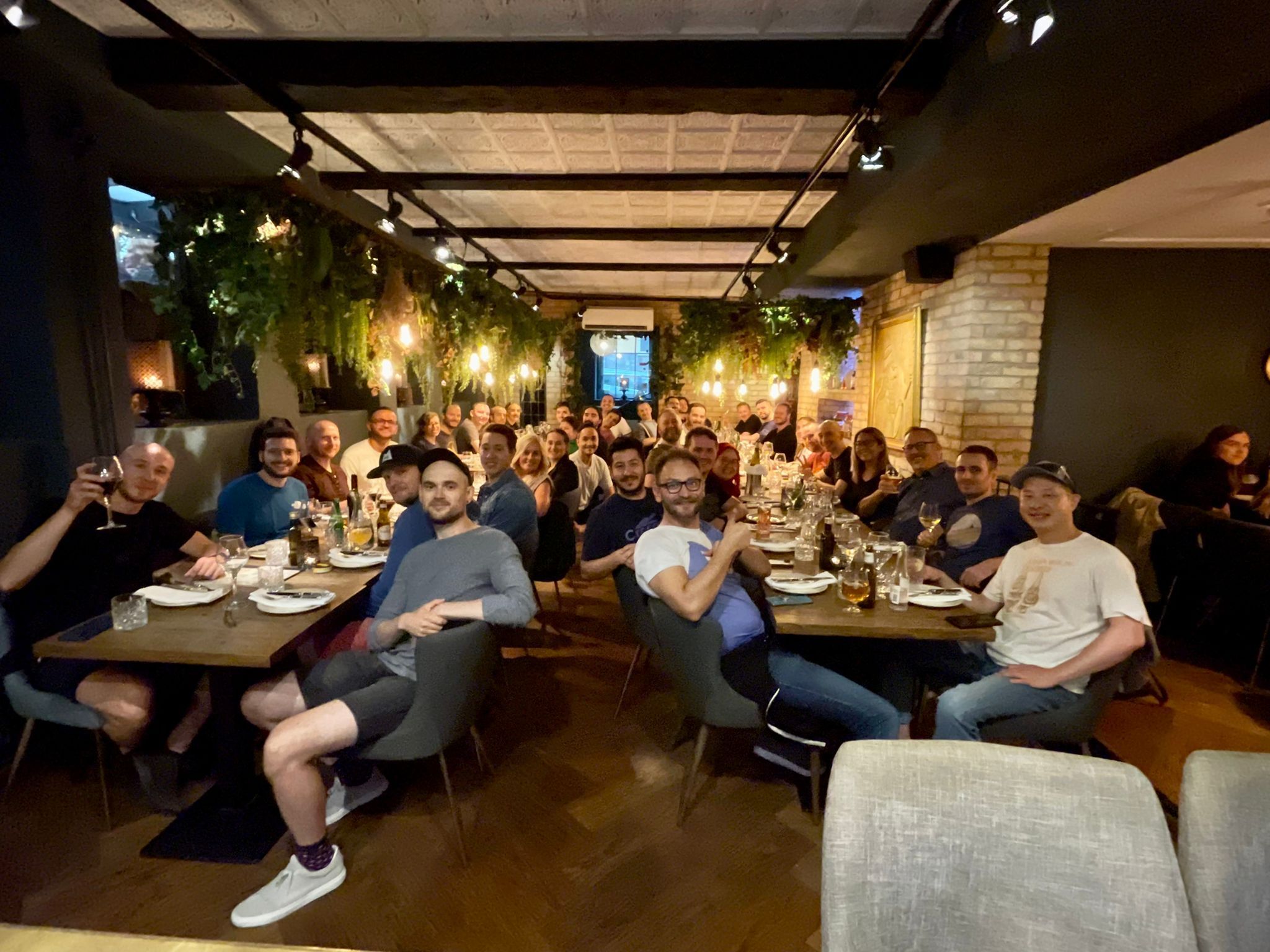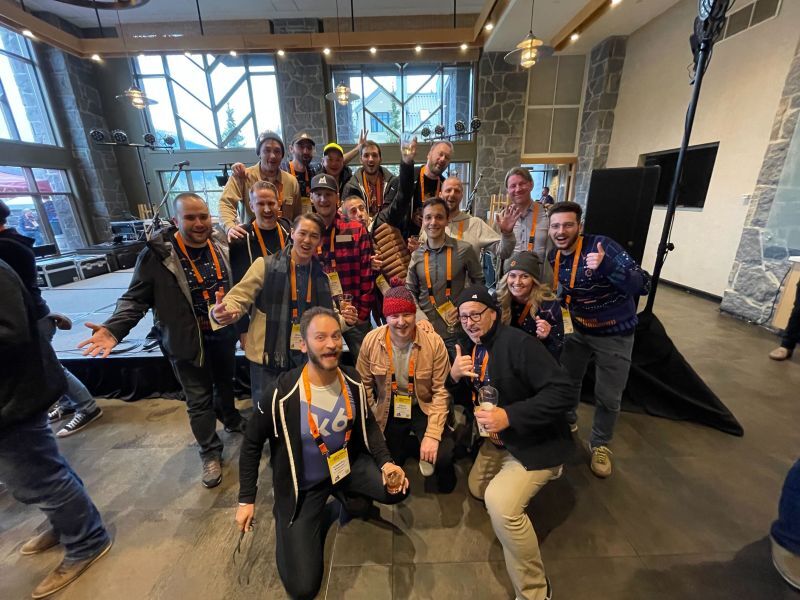
Grafana k6 one year later: Lessons learned after an acquisition
Update: Grafana k6 load and performance testing is now available natively in Grafana Cloud. Existing k6 Cloud customers will not be impacted; they will be migrated to the new experience at a later date. Get started with Grafana Cloud k6 →
A few years ago, I was meeting with venture capitalists and private equity firms about the future of k6, the open source performance testing tool that we created in 2016 and open sourced in 2017. After talking about the k6 product mission — to give modern engineering teams better tools to build reliable applications — one investor challenged us to create an even bigger vision for the company: What if we acquired a company to broaden the k6 story?
k6 allows us to understand a system’s concurrency limits (users or requests) and performance from the outside. Performance tests simulate clients sending requests to a system, like stimuli, to see how the system responds. As a result, we can determine if a system is capable of handling a specific volume of traffic within acceptable performance bounds. But we couldn’t see the insides of these systems, so we couldn’t effectively diagnose a problem — we could identify if a system was unhealthy, but we couldn’t tell you why it was so.
The missing piece of the puzzle turned out to be Grafana. We thought Grafana plus k6 would be a great fit, so we drew up a pitch deck about acquiring Grafana Labs and building a larger company with a mutual mission. Only we didn’t realize that within a few months, Grafana Labs would announce Series B funding (and within a year, a Series C round quickly followed by a Series D). So we dropped the idea of an acquisition — but I couldn’t really shake the idea of a partnership between k6 and Grafana.
Fast-forward 18 months, I reached out to Raj Dutt, co-founder and CEO of Grafana Labs, and proposed we do something together — whether it was related to marketing or product, we were open to anything — because I really felt like there was a much larger story that we could build together. Luckily, Raj agreed. In collaboration with the Grafana Labs Corporate Development team, we put together an agreement to accelerate the growth of k6 while ensuring autonomy. In June 2021, Grafana Labs officially acquired k6 and announced the news on the final day of GrafanCONline.

More than a year after our “reverse acquisition,” as I jokingly call it, I am now serving as the VP of Product at Grafana Labs. It’s exciting to be in the position to tell this larger story of incorporating k6 into all the technologies at Grafana Labs and vice versa — all while also building a larger product suite together as one company. There have also been valuable lessons learned in the past year that will continue to guide how k6 grows with Grafana Labs, and how the company at large looks at acquisitions in the future.
Lesson 1: People first
The day before the close of the acquisition, we told the larger k6 team about our future. Some team members already knew because of their positions and their involvement in the process. But when we announced it to the larger group, which was about 30 people at the time, I was both excited and a little nervous. We had some team members who had joined k6 after their previous companies had gone through acquisitions that were not so successful. So we were a little apprehensive to see how everyone would react.
One of the things that calmed me, in terms of my fear that anything would go south or that someone would voice strong objections to the acquisition, was that Raj and his two co-founders at Grafana Labs, Anthony Woods and Torkel Ödegaard, assured us that the intention was to keep k6 running as an independent entity. k6 was a mature business that had existing customers and an existing product out in the market. It would make little sense to force a consolidation immediately and risk losing a lot of the people who put their blood, sweat, and tears into building this product.
So we took an approach of being very organic in how we worked through the integration, not only in terms of the product, but more importantly with the people on our teams and in our respective open source communities. In retrospect, I think that was a very wise decision. If we look at the metric of how many people have remained, we’ve only lost two k6 employees as part of business-as-usual attrition. All in all, most people stayed from the point of acquisition until now, which I think is a strong indicator that life post-acquisition has been quite successful. In fact, the k6 org has almost doubled to about 50 people since we joined Grafana Labs.
The transition from working for k6 to working for Grafana Labs has been a very different experience for the team, depending on their role and how much interaction they have with other Grafanistas. So for a k6 team member in a customer-facing role or on the Go-to-Market (GTM) team, they were more likely to work closely with their peers in the wider organization, because that enablement and collaboration could more or less start from day one. The Research and Development (R&D) integration, however, was intentionally kept to a minimum so as to not disrupt product development efforts. As a result, someone in R&D may have been less likely to interact with the wider R&D org at Grafana Labs.

That is not to say that the k6 team hasn’t felt welcome. It’s the opposite: I know that the k6 team members who went to GrafanaFest, the first-ever company-wide celebration of the people behind our products, had a really positive experience because they were introduced to so many different people across the larger Grafana Labs org. And I think they left with a stronger feeling of being part of the bigger company, which was very helpful.
Lesson 2: Don’t hesitate to integrate products
Leaving k6 as an independent entity was good from the people retention perspective. But in reflecting on the past year, I realized we should have incorporated the k6 teams into the Grafana Labs sales operations and product teams faster.
For example, having our k6 sales rep join the larger Grafana Labs sales team this year and work in collaboration with them as a k6 sales specialist has proven to be quite successful. This integrated approach is something that we should have explored earlier post-acquisition. It enabled the sales reps to sell the k6 product and to incorporate k6 into the larger observability story they tell our users. And as soon as we were ready, the Corporate Development, PeopleOps, and GTM teams ensured a smooth transition when k6 team members assumed new roles within the combined GTM organization.
Another learning that we can take with us for future acquisitions is promoting product integration faster. Because we kept k6 running independently, our product planning also initially remained separate from Grafana Labs’ larger roadmap. But now as I look back, I think we should have started the work earlier to create a more cohesive product experience.
The k6 and Grafana Labs teams, however, did find natural opportunities to work together. The k6 engineers collaborated with Grafana Labs engineers to release the first version of a Grafana plugin that could talk to k6 Cloud, and they have continued to improve the integration.
There are now more occasions where the teams are working together more organically, but also by design. For example, Daniel González Lopes on the k6 engineering team was a Grafana Tempo maintainer prior to the acquisition and continues to work on that project. Mark Meier transitioned from being Head of Customer at k6 to a Product Manager within the Grafana Labs product team. And Tom Miseur moved from being a k6 Technical Specialist to a Senior Field Manager on Grafana Labs’ GTM team.
Lesson 3: Evolve company culture together
While cross-collaboration among teams is a step in the right direction, the question then becomes how can we make sure that everyone in the acquired company feels like they’re part of the larger Grafana Labs organization?
It’s tough to switch from having the soul of your small company to adopting the soul of a larger company. Some people have been working on the k6 product for five to seven years, and I would imagine they certainly have a different emotional attachment to k6 as a company, as a brand, and a team compared to someone who joined in the past six months when we were already part of Grafana Labs.
“Our primary goal will always be to make sure that we don’t lose the people, because the people are vital to the success of the acquisition.”
No matter how long you have been with k6 or Grafana Labs, what impacts our culture as a whole is that Grafana Labs is growing so fast. There are a small number of Grafanistas who’ve been here for a long time, but the vast majority have been here probably less than a year or two, so everybody is essentially on an equal playing field.
Still, as the acquired company becomes more integrated and moves towards the acquiring company’s branding and messaging, naturally the culture of the acquired company evolves and grows with the larger organization. I don’t know if there’s a proven recipe for how to deal with this, but it’s part of this post-acquisition journey we have to face. I do know that retention and a sense of belonging for k6 team members continue to be priorities for the PeopleOps and Corporate Development teams more than a year post-close.
It’s important to get it right: Our primary goal will always be to make sure that we don’t lose the people, because the people are vital to the success of the acquisition. We have to think about how we integrate the product into the larger Grafana stack as well as the acquired team into the larger organization.
Looking ahead at future acquisitions
Now as the VP of Product, I bring a unique perspective to considering future acquisitions. It’s important to have a plan: There’s a plan as to why the company’s being acquired, how that acquisition fits into the larger product strategy, and how the people in that organization can best be integrated into Grafana Labs. We need to consider how to best facilitate both the continued growth of the talent at the organization as well as the product, depending on the stage of that product.
The k6 acquisition experience at Grafana Labs was a very intentional, and successful, way of dealing with an acquisition. And it’s based on what Raj and Anthony learned not to do based on their experience after their previous company was acquired. So they took that learning and applied it to this acquisition, and it’s panned out really well. Now, as we work together to tell our story and we look towards our united future, we are aligned in terms of how we build companies, how we build products based on open source, and how we see the future for our products and our people.
The easiest way to get started with k6 is through Grafana Cloud k6. The free tier includes 500 virtual user hours/month for k6 testing and more. Sign up for free now!



